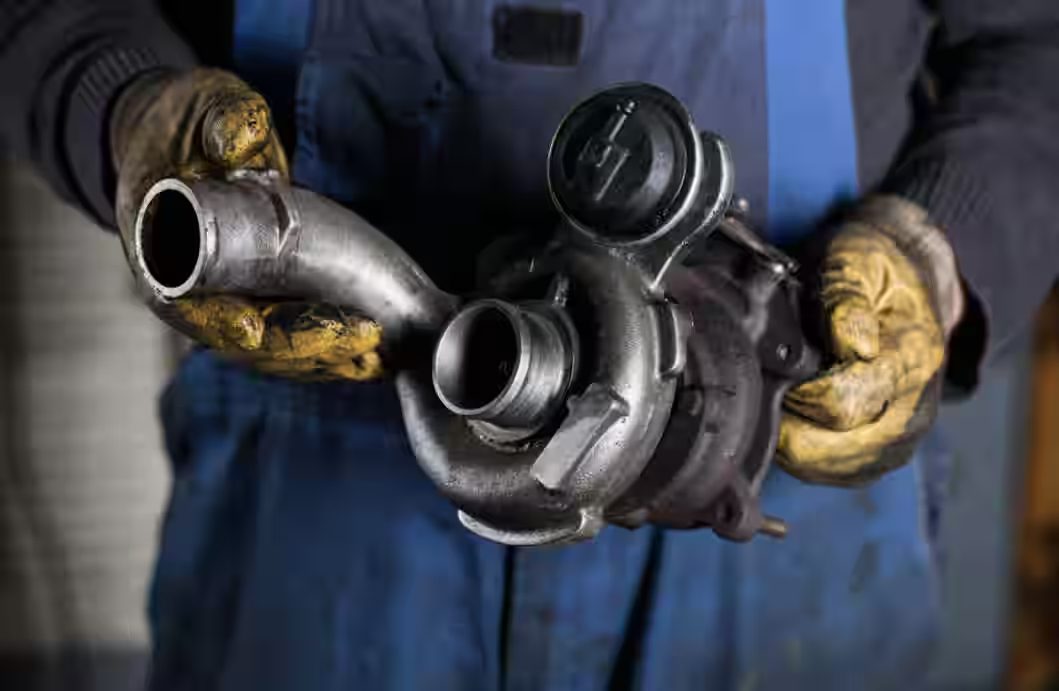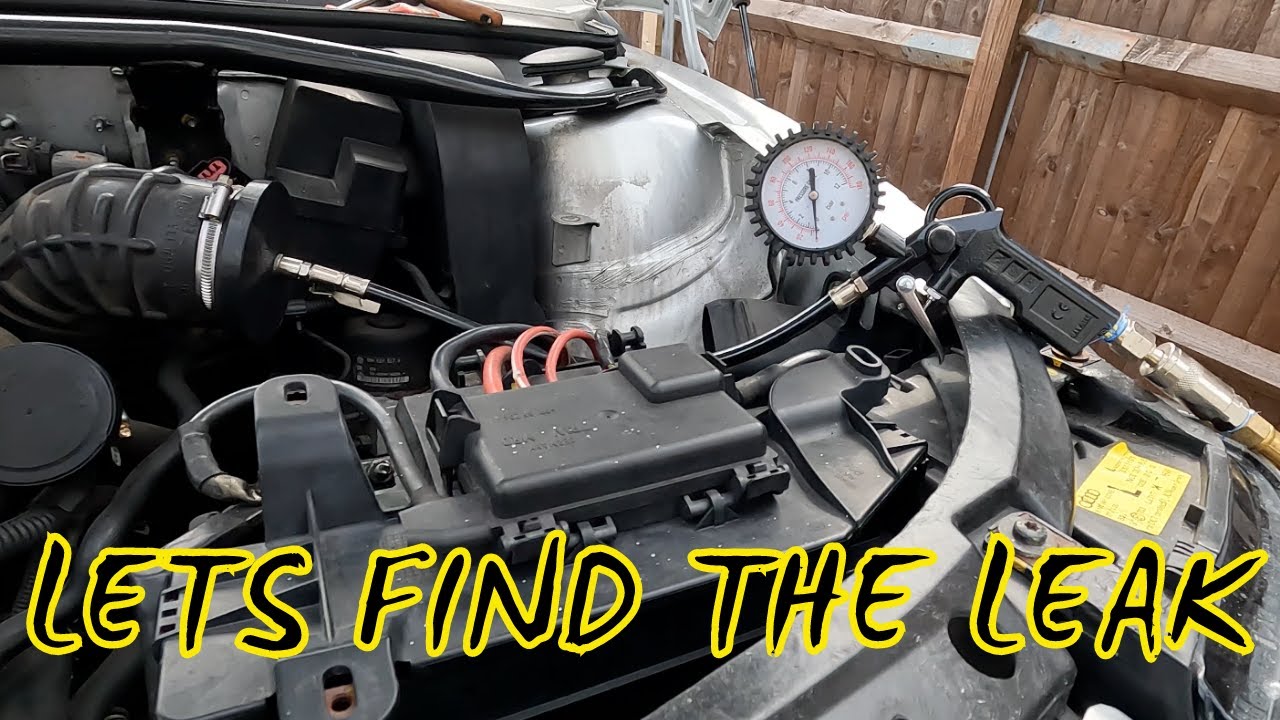Don’t Let Leaks Kill Your Boost—Learn Pro Tips to Restore Power, Save Money, and Avoid Engine Damage!
1. Why Boost Leaks Are a Turbo Killer ⚠️
A turbocharger forces compressed air into your engine, boosting horsepower and efficiency. But even a tiny leak in the intake system can sabotage performance, causing:
- Loss of power: Escaping air reduces boost pressure.
- Poor fuel economy: The ECU compensates by dumping more fuel.
- Engine knock: Lean air-fuel mixtures risk detonation.
- Turbo strain: Overworking the turbo to meet boost targets.
Key Stat: A 1 PSI boost leak can cost 10–15% horsepower and 5–7% MPG (SAE International).
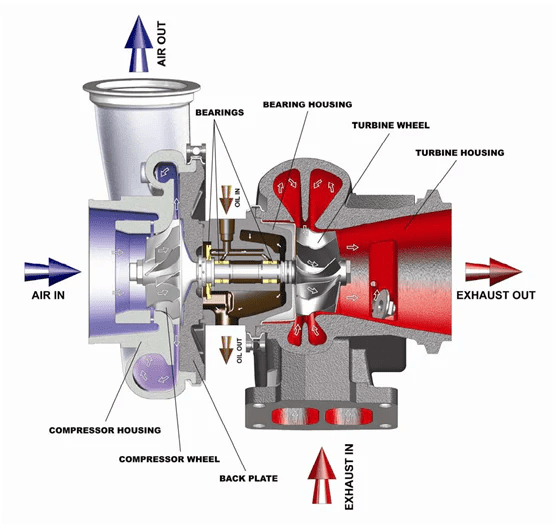
2. Symptoms of a Boost Leak 🚩
- Hissing/whistling noises under acceleration.
- Sluggish throttle response or delayed boost.
- Check engine light (codes P0299, P2262).
- Excessive black smoke (diesel engines).
- Overheating turbo from prolonged overworking.
Pro Tip: Test for leaks after any intake modifications or high-stress driving.
3. How to Diagnose Boost Leaks 🔍
Method 1: Boost Leak Tester
- Tools Needed: Homemade tester (PVC cap, air compressor, pressure gauge) or commercial kit (50–150).
- Steps:
- Disconnect the intake pipe after the turbo.
- Attach the tester and pressurize the system to 15–20 PSI.
- Listen for hissing and spray soapy water on connections to spot bubbles.
Method 2: Smoke Machine Test
- Tools: Smoke machine (200–500) or vape pen (DIY hack).
- Steps:
- Inject smoke into the intake.
- Watch for escaping smoke at couplings, intercoolers, or throttle bodies.
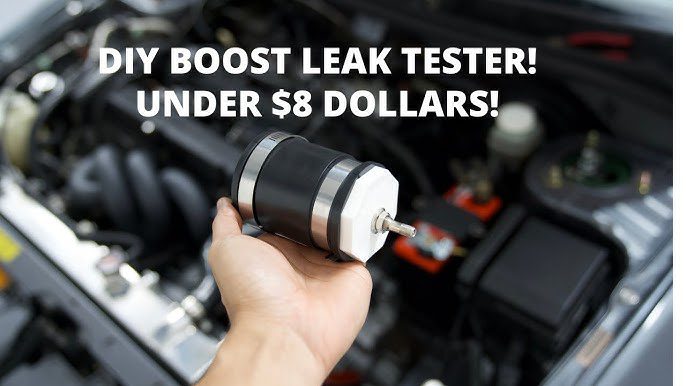
Common Leak Points:
- Intercooler cracks (especially end tanks).
- Loose hose clamps or split silicone couplers.
- Faulty blow-off valve (BOV) or wastegate actuator.
- Cracked intake manifold or throttle body gasket.
4. Step-by-Step Repair Guide 🔧
1. Tighten/Replace Hose Clamps
- Upgrade: Use T-bolt clamps (2–5 each) instead of worm-gear clamps.
- Torque: Follow manufacturer specs (usually 8–12 ft-lbs).
2. Patch or Replace Damaged Hoses
- Temporary Fix: High-temperature silicone tape (for small cracks).
- Permanent Fix: Install reinforced silicone hoses (30–100).
3. Repair/Replace the Intercooler
- Aluminum Welding: For minor cracks (50–150 at a shop).
- Upgrade: Bar-and-plate intercoolers handle higher boost (e.g., Mishimoto).
4. Seal Intake Manifold/Throttle Body
- Remove Old Gaskets: Use a plastic scraper to avoid scratching surfaces.
- Apply RTV Sealant: Permatex Ultra Black withstands high temps.
5. Test the BOV/Wastegate
- BOV Test: Pressurize the system—if it leaks at low PSI, rebuild or replace.
- Wastegate Test: Use a hand vacuum pump to check actuator movement.
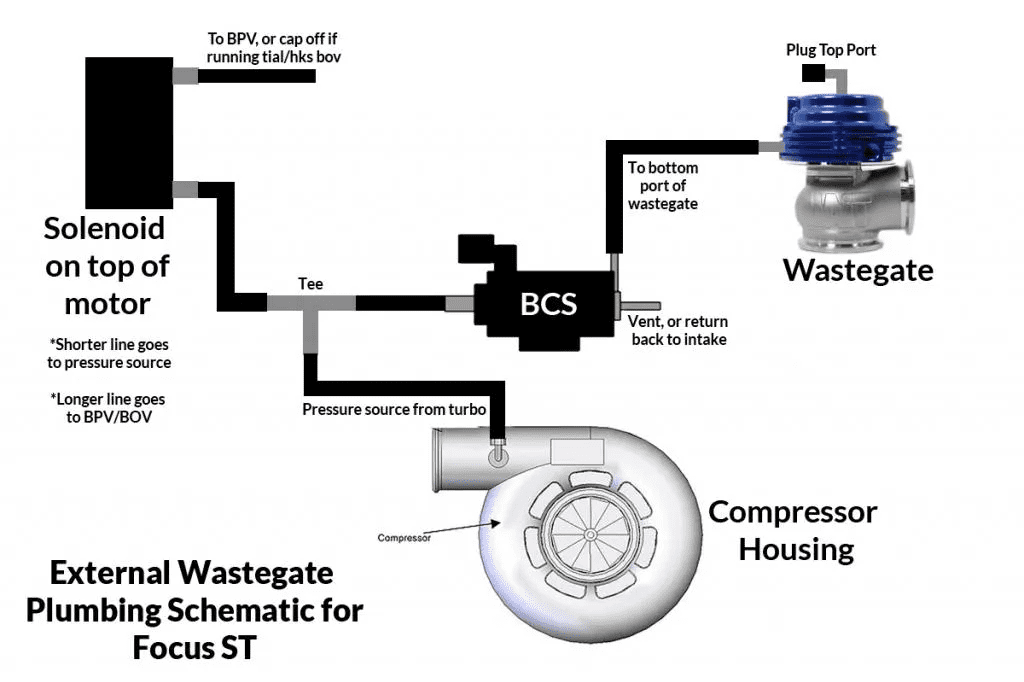
5. Tools You’ll Need 🧰
| Tool | Purpose | Cost |
|---|---|---|
| Boost Leak Tester | Pressurize the system | 50–150 |
| Smoke Machine | Pinpoint elusive leaks | 200–500 |
| T-Bolt Clamp Kit | Secure hoses under boost | 20–50 |
| Vacuum Pump | Test wastegate actuator | 30–80 |
| Silicone Hose Kit | Replace cracked hoses | 50–200 |
Pro Tip: Rent a smoke machine from AutoZone’s Loan-A-Tool program.
6. Common Mistakes to Avoid 🚫
- Overtightening Clamps: Cuts hoses and worsens leaks.
- Ignoring Small Cracks: They expand under boost pressure.
- Skipping Post-Repair Tests: Verify fixes with a second pressure test.
- Using Cheap Parts: Low-quality couplers fail under high heat/boost.
Case Study: A Subaru WRX owner saved $800 by fixing a $800 intercooler coupler.
7. Prevention Tips 🔄
- Inspect Regularly: Check hoses/clamps every oil change.
- Upgrade Components: Use heat-resistant hoses for modified turbos.
- Monitor Boost Gauges: Sudden drops signal leaks.
8. FAQs ❓
Q1: Can I drive with a boost leak?
A: Short trips only—prolonged driving risks turbo/engine damage.
Q2: Why does my boost leak return after fixing?
A: Missed a weak point (e.g., throttle body gasket) or used subpar parts.
Q3: Do boost leaks cause smoke?
A: In diesels, yes (unburned fuel). Gas engines may show no smoke.
Q4: Can a boost leak damage the turbo?
A: Yes—over-spooling to hit target PSI wears bearings prematurely.
Q5: How much does a pro repair cost?
A: 200–1,000+ depending on leak location and parts.
9. Free Boost Leak Diagnosis Guide 📝
[🔗 Download Your Free PDF Here]
Includes:
- DIY boost leak tester instructions.
- Pressure test PSI chart by vehicle.
- Torque specs for common clamps.
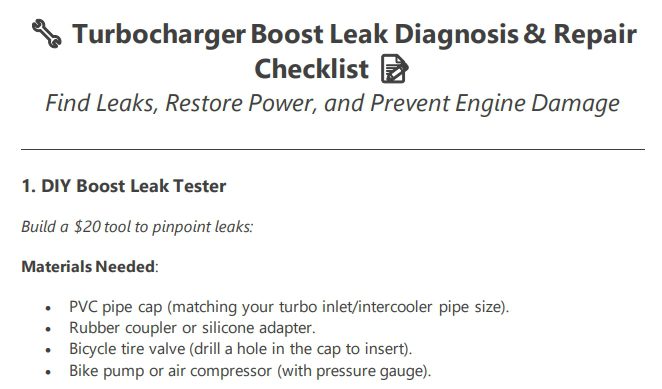
10. Final Tips 💡
- Label Hoses: Take photos before disassembly to avoid reinstallation errors.
- Upgrade Clamps: T-bolt > worm-gear for high-performance builds.
- Log Data: Use an OBD2 scanner to track boost levels pre/post repair.
🚘 Share this guide to help fellow turbo enthusiasts maximize their boost—and their smiles! 🚘
Expand Your Automotive Knowledge 📝
Explore 500+ Free Expert-Curated Guides
🚗 Learn New Skills
From basic maintenance to advanced repairs — clear, actionable tutorials for every skill level.
🌍 Access Anywhere
Mobile-friendly guides with HD visuals. No downloads required.
- Guides & Tutorials
- Car Maintenance 101
- Diagnostics & Troubleshooting
- Seasonal Maintenance
- Budget-Friendly Repairs
- Electrical Systems Guide
- Car Safety & Reliability
- Tools & Product Reviews
- Routine Maintenance
- Car Modifications & Upgrades
- Buying/Selling Guides
- Eco-Friendly Car Care
- Advanced Repairs
- Car Laws & Compliance
- Emergency Repairs
- Future Car Tech

